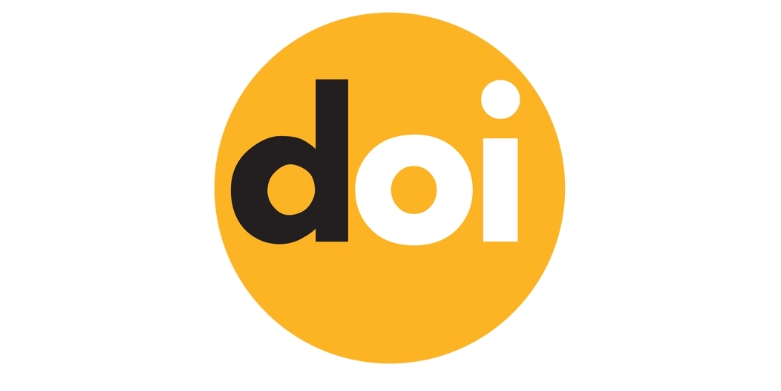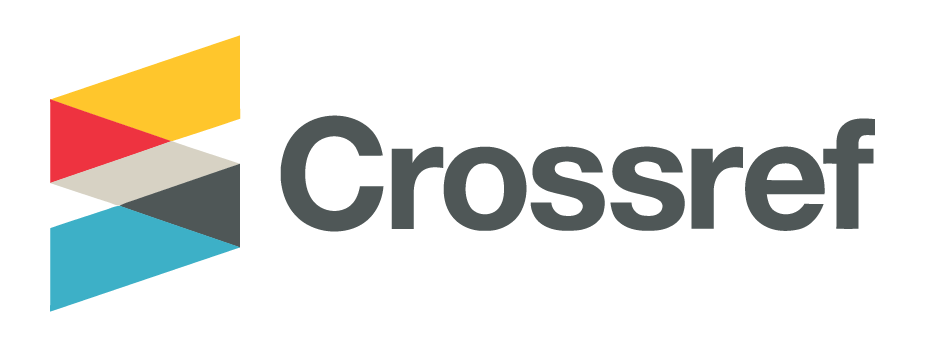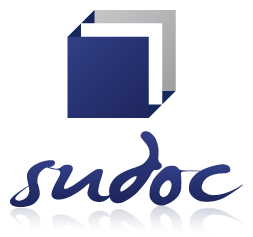The impact of flipped learning on learners’ foreign language anxiety
DOI:
https://doi.org/10.63053/ijrel.10Keywords:
Pre-intermediate learners, flipped learning, foreign language anxietyAbstract
Flipped learning has become a popular approach in different educational fields, including foreign language learning. The present study investigated the impact of teaching vocabularies via flipped classrooms on Iranian EFL learners’ foreign language anxiety (FLA). A total of 90 pre-intermediate Iranian EFL learners participated in this study. One class was randomly assigned to the flipped group as the experimental one (N=45) and the other was non-flipped as the control group (N=45). The anxiety of learners was determined by the Foreign Language Classroom Anxiety Scale (FLCAS) before and after the treatment in flipped and non-flipped groups comparatively. The results of this study showed a significant reduction in FLA levels in the flipped group. However, there was no significant change in the non-flipped group.
References
Afrilyasanti, R., Cahyono, B. Y., & Astuti, U. P. (2016). Effect of flipped classroom model on Indonesian EFL students’ writing ability across and individual differences in learning. International Journal of English Language and Linguistics Research, 4(5), 65-81.
Arslan, A. (2020). A systematic review on flipped learning in teaching English as a foreign or second language. Dil ve Dilbilimi Çalışmaları Dergisi, 16(2), 775–797. https://doi.org/10.17263/jlls.759300
Azevedo, R. & Cromley, J. G. (2004). Does training on self-regulated learning facilitate students’ learning with hypermedia? Journal of Educational Psychology, 96(3), 523–535.
Basal, A. (2015). The implementation of a flipped classroom in foreign language teaching. Turkish Online Journal of Distance Education, 16(4), 28–37. doi:10.17718/tojde. 72185
Bergman, J., & Sams, A. (2012). Flip your classroom: Reach every student in every class every day. Washington, DC: International Society for Technology in Education. https://www.rcboe.org/cms/lib/GA01903614/Centricity/Domain/15451/Flip_Your_ Classroom.pdf.
Buitrago, C. R., & Díaz, J. (2018). Flipping Your Writing Lessons: Optimizing Time in Your EFL Writing Classroom. In J. Mehring, & A. Leis, Innovations in Flipping the Language Classroom (pp. 69-91). Singapore: Springer. Retrieved from https://doi.org/10.1007/978-981-10-6968-0_6
Chang, Y. H., Lin, P. R., & Lu, Y. T. (2020). Development of a Kinect-based English learning system based on integrating the ARCS model with situated learning. Sustainability, 12(5), 2037. https://doi.org/10.3390/su12052037
Chen Hsieh, J. S., Wu, W. V., & Marek, M. W. (2017). Using the flipped classroom to enhance EFL learning. Computer Assisted Language Learning, doi:10.1080/ 09588221.2015.1111910
Chen Hsieh, J.S., Wu, W.-C.V., & Marek, M.W. (2017). Using the flipped classroom to enhance EFL learning. Computer Assisted Language Learning, 30, 1–21.
Chen, N.S., Hsieh, S.W., & Kinshuk. (2008). Effects of short-term memory and content representation type on mobile language learning. Language Learning & Technology, 12(3), 93-113.
Davis, C. (2013). Flipped or inverted learning: Strategies for course design. In E. G. Smyth & J. X. Volker (Eds.), Enhancing instruction with visual media: Utilizing video and lecture capture (pp. 241–265). Hershey, PA: IGI Global. doi:10.4018/978-1-4666-3962-1.ch01
Garver, M. S., & Roberts, B. A. (2013). Flipping & clicking your way to higher- order learning. Marketing Education Review, 23(1), 17–22. doi:10.2753/MER1052-8008230103
Goka, D., Bozoglanb, H., Bozoglanc, B. (2023). Effects of online flipped classroom on foreign language classroom anxiety and reading anxiety. Computer Assisted Language Learning, 36 (4), 840-860. https://doi.org/10.1080/09588221.2021.1950191
Herreid, C. F. & Schiller, N. A. (2013). Case studies and the flipped classroom. Journal of College Science Teaching. Vol. 42(5), 62-66.
Horwitz, E. K. (2017). On the misreading of Horwitz, Horwitz, and Cope (1986) and the need to balance anxiety research and the experiences of anxious language learners. In C. Gkonou, Horwitz, E. K., Horwitz, M. B., & Cope, J. (1986). Foreign language classroom anxiety. The Modern Language Journal, 70(2), 125–132. https://doi.org/10.2307/327317
Hu, X., Zhang, X., & McGeown, S. (in press). Foreign language anxiety and achievement: A study of primary school students learning English in China. Language Teaching Research, 1–22. https://doi.org/10.1177/13621688211032332
Hung, H. T. (2017a). Clickers in the flipped classroom: Bring your own device (BYOD) to promote student learning. Interactive Learning Environments, 25(8), 983–995. doi:10.1080/10494820.2016.1240090
Hung, H. T. (2017b). Design-Based research: Redesign of an English language course using a flipped classroom approach. TESOL Quarterly, 51(1), 180–192. doi:10.1002/tesq.328
Hung, H. T. (2017c). The integration of a student response system in flipped classrooms. Language Learning & Technology, 21(1), 16–27.
Hung, H.-T. (2015). Flipping the classroom for English language learners to foster active learning. Computer Assisted Language Learning, 28, 81–96.
Hung, H.-T. (2017). Design-based research: Redesign of an English language course using a flipped classroom approach. TESOL Quarterly, 51, 180–192.
Jiang, M. Y. C., Jong, M. S. Y., Lau, W. W. F., Chai, C. S., Liu, K. S. X., & Park, M. (2020). A scoping review on flipped classroom approach in language education: Challenges, implications and an interaction model. Computer Assisted Language Learning, 1–32. doi:10.1080/09588221.2020.1789171
Kim, J., Park, H., Jang, M., & Nam, H. (2017). Exploring flipped classroom effects on second language learners’ cognitive processing. Foreign Language Annals, 50(2), 260–284. doi:10.1111/flan.12260
Kirmizi, Ö., & Kömeç, F. (2019). The impact of the flipped classroom on receptive and productive vocabulary learning. Dil ve Dilbilimi Çalışmaları Dergisi, 15(2), 437–449. https://doi.org/10.17263/jlls.586096
Leis, A., Cooke, S., & Tohei, A. (2015). The effects of flipped classrooms on English composition writing in an EFL environment. International Journal of Computer-Assisted Language Learning and Teaching (IJCALLT), 5, 37–51.
Li, Z. Y. (2021). Book review: engaging language learners in contemporary classrooms by Mercer S and Dörnyei Z. RELC J. 1–3. doi: 10.1177/00336882211043664 [Epub ahead of print].
Li, Z., and Li, J. (2022). Learner engagement in the flipped foreign language classroom: Definitions, debates, and directions of future research. Front. Psychol. 13:810701. doi: 10.3389/fpsyg.2022.810701
Lundin, M., Rensfeldt, A. B., Hillman, T., Lantz-Andersson, A., & Peterson, L. (2018). Higher education dominance and siloed knowledge: A systematic review of flipped classroom research. International Journal of Educational Technology in Higher Education, 15(1), 30. doi:10.1186/s41239-018-0101-6
MacIntyre, P. D., & Gardner, R. C. (1994b). The effects of induced anxiety on three stages of cognitive processing in computerized vocabulary learning. Studies in Second Language Acquisition, 16(1), 1–17. https://doi.org/10.1017/S0272263100012560
Mercer, S., and Dörnyei, Z. (2020). Engaging Language Learners In Contemporary Classrooms. Cambridge: Cambridge University Press.
Moranski, K., & Kim, F. (2016). Flipping’ lessons in a multi-section Spanish course: Implications for assigning explicit grammar instruction outside of the classroom. The Modern Language Journal, 100(4), 830–852. doi:10.1111/modl.12366
Novak, G. M. (2011). Just‐in‐time teaching. New Directions for Teaching and Learning, 2011(128), 63–73. doi:10.1002/tl.469
Pang, M. F., Linder, C., & Fraser, D. (2006). Beyond lesson studies and design experiments: Using theoretical tools in practice and finding out how they work. International Review of Economics Education, 5(1), 28–45. doi:10.1016/S1477-3880(15)30126-2
Shyr, W. J., & Chen, C. H. (2018). Designing a technology-enhanced flipped learning system to facilitate students’ self-regulation and performance. Journal of Computer Assisted Learning, 34(1), 53–62. doi:10.1111/jcal.12213
Smith, C. V., & Cardaciotto, L. (2012). Is active learning like broccoli? Student perceptions of active learning in large lecture classes. Journal of the Scholarship of Teaching and Learning, 11(1), 53–61. https://eric.ed.gov/?id=EJ915923.
Svalberg, A. M.-L. (2018). Researching language engagement: current trends, and future directions. Lang. Awaren. 27, 21–39. doi: 10.1080/09658416.2017.1406490
Talbert, R. (2012). Inverted classroom. Colleagues, 9(1), 1–3. https://scholarworks.gvsu. edu/cgi/viewcontent.cgi?article=1183&context=colleagues.
Tallon, M. (2009). Foreign language anxiety and heritage students of Spanish: A quantitative study. Foreign Language Annals, 42(1), 112–137. doi:10.1111/j.1944-9720.2009.01011.x
Teimouri, Y., Goetze, J., & Plonsky, L. (2019). Second language anxiety and achievement: A meta-analysis. Studies in Second Language Acquisition, 41(2), 363–387. https://doi.org/10.1017/S0272263118000311
Turan, Z., & Akdag-Cimen, B. (2019). Flipped classroom in English language teaching: A systematic review. Computer Assisted Language Learning, 33(5–6), 1–17. doi:10.1080/09588221.2019.1584117
Uz Bilgin, C., & Tokel, S. T. (2019). Facilitating contextual vocabulary learning in a mobile-supported situated learning environment. Journal of Educational Computing Research, 57(4), 930–953. https://doi.org/10.1177/0735633118779397
Wang, J., An, N., & Wright, C. (2018). Enhancing beginner learners’ oral proficiency in a flipped Chinese foreign language classroom. Computer Assisted Language Learning, 31(5-6), 490–521. https://doi.org/10.1080/09588221.2017.1417872
Wanner, T., and Palmer, E. (2015). Personalizing learning: exploring student and teacher perceptions about flexible learning and assessment in a flipped university course. Comput. Educ. 88, 354–369. doi: 10.1016/j.compedu.2015.07.008
Webb, M., & Doman, E. (2016). Does the flipped classroom lead to increased gains on learning outcomes in ESL/EFL contexts? CATESOL Journal, 28(1), 39–67. https://eric.ed.gov/?id=EJ1111606.
Zhang, H., Li, J., Jiao, L., Ma, W. & Guan, C. (2016). The adjustment and effects of vocabulary teaching strategies in flipped classroom. Creative Education,7, 1966-1973.
Zhang, X. (2019). Foreign language anxiety and foreign language performance: A meta‐analysis. The Modern Language Journal, 103(4), 763–781. https://doi.org/10.1111/modl.12590
Downloads
Published
How to Cite
Issue
Section
License
Copyright (c) 2024 International Journal of Advanced Research in Humanities and Law

This work is licensed under a Creative Commons Attribution 4.0 International License.













